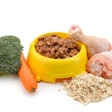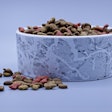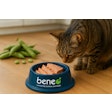
Tim Wall | DALL-E
Perhaps no other plant has such a reputation for boosting strength as spinach, thanks to a certain cartoon sailor, and spinach benefits dogs and cats too.
Spinach is at the top of the superfoods list, wrote Greg Aldrich, Ph.D., Kansas State University research associate professor, in his Petfood Industry column, “Spinach: Is this original superfood beneficial for dogs and cats?” Spinach is widely considered a superfood thanks to its natural antioxidants, bioactives, functional fiber and essential nutrients.
Many pet food brands now highlight spinach in their blends, and it may offer similar health benefits to dogs and cats.
- Spinach is a leafy green from central and western Asia and belongs to the Amaranth family, related to beet and quinoa.
- China is the largest producer globally; the U.S. is far behind but has been increasing per‑capita consumption to about 1.5 lb per person.
- Spinach is distributed under U.S. No. 1 or U.S. No. 2 grades; the same supply chain largely supports pet food use.
- When dried into flakes, leaves are cleaned, dewatered, dried (tray or drum), and sized before packaging.
- Fresh spinach is mostly water (~91 %), which limits macronutrient concentrations (e.g. ~2.9 % protein, ~0.4 % fat).
- On a dry‑matter basis, spinach contains high levels of dietary fiber (~25 %) and significant micronutrients (potassium, iron, folate, vitamin K, carotenoids, etc.).
- It also contains secondary metabolites (flavonoids, phenolic acids) with antioxidant and anti‑inflammatory potential, plus compounds like chlorophyll and nitrates that might have additional physiological effects.
- Spinach has existed in dog diet research since at least 1918; more recent work shows chlorophyll from spinach is absorbed in dogs and may support cellular antioxidant activity, immune function or cognition.
- In pet foods or treats, spinach is typically included at low levels (<0.1 %) due to cost and processing stability. Its benefit may be diluted at such inclusion rates.
- Nonetheless, spinach offers nutritional, functional, marketing, and health maintenance value, and its superfood branding appears to have a credible foundation in modern dog and cat diets.

















